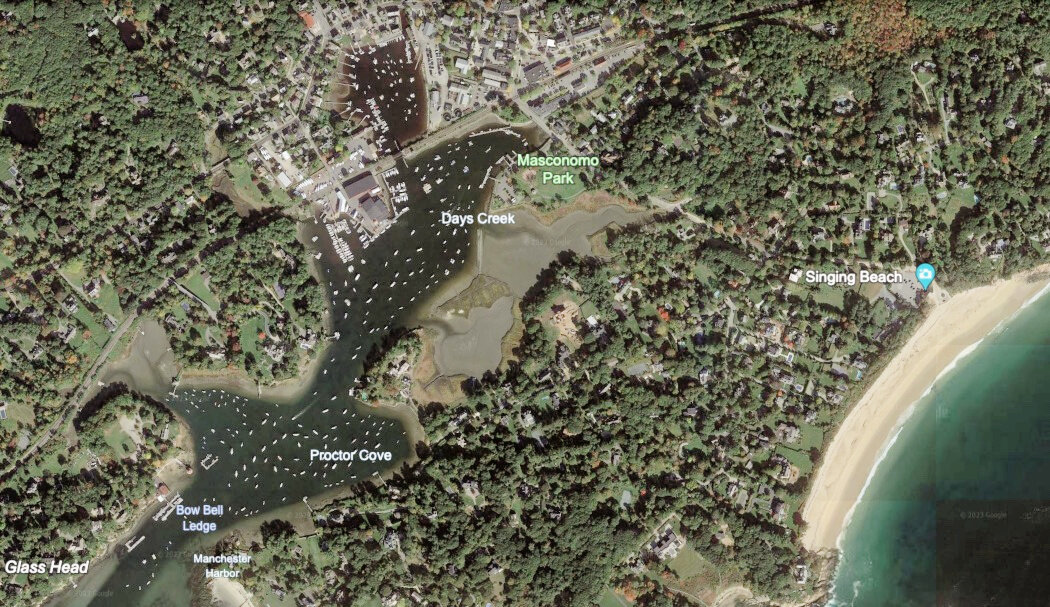
At December's 8th Annual Awards luncheon of Massachusetts’ American Planning Association, Manchester received the Sustainability and Resiliency Award for our “Coastal Vulnerability Action Plan” we recently completed for protecting the Village core area from sea level rise and greater storms. The plan was crafted by a steering committee of residents and a team of consultants from Fuss and O’Neill, an engineering and planning firm with offices in Boston. The work to create the plan was funded by a grant from the state’s Coastal Zone Management office.
The graphic-intensive, 100-page report provides a wealth of information and a road map for action steps that can be taken in the short, medium, and long terms to protect the village core area from flooding. Even without increased sea-level rise the village has been subject to high waters. Many of the Town’s critical facilities – the sewer plant, the police station, and the fire station – have flooded in the past and will be subject to more frequent and destructive flooding. Private structures are vulnerable as well. Thus, steps are needed to maintain the viability of these buildings and facilities.
For the short term, the plan lays out many protective actions that can be taken now and lays the groundwork for bigger measures in the years ahead. Making buildings more watertight can provide moderate flood protection in the near term. This means better-sealed doors and having at-ready temporary barriers that can be put in place ahead of a storm. Electric panels, emergency generators and other critical equipment can be elevated to avoid high water. Another immediate fix the plan recommends is to install “check valves” on drain outlets that prevent seawater from backing up these structures and reverse flowing out of collection basins. These actions are already proceeding with the help of additional state grant funding.
One of the medium-term recommendations is to see where room can be provided for the inland migration of marshes. These ecosystems offer an important buffer between the built environment and open water but with rising seas these marshlands will disappear unless room is provided for them to migrate inland. There are marshes around the harbor that we might be able to facilitate their upland migration to enable them to offer their dampening effect on storm surges. In what may initially seem counterintuitive, this may mean removing hardened shoreline barriers to allow inland migration.
Similarly, the plan recommends studying how Masconomo Park could be reconfigured as a “floodable park” that helps buffer the village area from surging seas. A community design exercise will be taking place later in the winter and into the spring of 2024 as part of the latest grant the Town has received to help implement part of the Action Plan. Like many other areas in the village, this area was once tidelands that have since been filled in. Selective reversal of some of these areas could form part of protecting remaining built-up areas.
What is a floodable park? Examples are starting to emerge in other coastal areas. The idea is to create parklands resilient to occasional flooding with amenities that can withstand flood waters and be usable once the water recedes. For Masconomo that may mean relocating the parking area away from the harbor’s edge, lowering the elevation in certain sections and rethinking the ground cover in these sections. These ideas and others will be explored through the upcoming public design process (charrette.)
Other longer-term potential actions include elevating buildings and roads (e.g.: Beach Street from the railroad tracks to past Old Neck Road) raising the MBTA tracks and creating a protective berm along with a flood gate at the drawbridge and relocating certain critical facilities like the police and fire stations. A more radical alternative is mentioned as well – retreating from the water’s edge with a more extensive restoration of the natural shoreline.
The good news is that, thanks to the efforts of many, we have crafted an award-winning document that provides immediate steps that we are now taking to help reduce our vulnerability to flooding and we have identified longer-term options that may offer even greater protections but that will require more study and discussion in the years ahead.